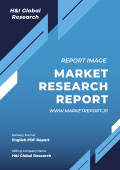Chapter 1. Executive Summary
1.1. Market Snapshot
1.2. Global & Segmental Market Estimates & Forecasts, 2019-2029 (USD Billion)
1.2.1. Algorithmic Trading Market, by Region, 2019-2029 (USD Billion)
1.2.2. Algorithmic Trading Market, by Type, 2019-2029 (USD Billion)
1.2.3. Algorithmic Trading Market, by Deployment, 2019-2029 (USD Billion)
1.2.4. Algorithmic Trading Market, by End-user, 2019-2029 (USD Billion)
1.3. Key Trends
1.4. Estimation Methodology
1.5. Research Assumption
Chapter 2. Global Algorithmic Trading Market Definition and Scope
2.1. Objective of the Study
2.2. Market Definition & Scope
2.2.1. Scope of the Study
2.2.2. Industry Evolution
2.3. Years Considered for the Study
2.4. Currency Conversion Rates
Chapter 3. Global Algorithmic Trading Market Dynamics
3.1. Algorithmic Trading Market Impact Analysis (2019-2029)
3.1.1. Market Drivers
3.1.1.1. Surging adoption of algorithmic trading in financial institutions
3.1.1.2. Rise in government regulations
3.1.2. Market Challenges
3.1.2.1. Lack of appropriate risk valuation capabilities
3.1.2.2. Lack of accuracy and consistency in algorithms
3.1.3. Market Opportunities
3.1.3.1. Rising emergence of AI and ML in financial services
3.1.3.2. Surge in demand for cloud-based solutions
Chapter 4. Global Algorithmic Trading Market Industry Analysis
4.1. Porter’s 5 Force Model
4.1.1. Bargaining Power of Suppliers
4.1.2. Bargaining Power of Buyers
4.1.3. Threat of New Entrants
4.1.4. Threat of Substitutes
4.1.5. Competitive Rivalry
4.2. Futuristic Approach to Porter’s 5 Force Model (2019-2029)
4.3. PEST Analysis
4.3.1. Political
4.3.2. Economical
4.3.3. Social
4.3.4. Technological
4.4. Top investment opportunity
4.5. Top winning strategies
4.6. Industry Experts Prospective
4.7. Analyst Recommendation & Conclusion
Chapter 5. Risk Assessment: COVID-19 Impact
5.1. Assessment of the overall impact of COVID-19 on the industry
5.2. Pre COVID-19 and post COVID-19 Market scenario
Chapter 6. Global Algorithmic Trading Market, by Type
6.1. Market Snapshot
6.2. Global Algorithmic Trading Market by Type, Performance – Potential Analysis
6.3. Global Algorithmic Trading Market Estimates & Forecasts by Type 2019-2029 (USD Billion)
6.4. Algorithmic Trading Market, Sub Segment Analysis
6.4.1. Stock Market
6.4.2. Foreign Exchange
6.4.3. Exchange-Traded Fund
6.4.4. Bonds
6.4.5. Cryptocurrencies
6.4.6. Others
Chapter 7. Global Algorithmic Trading Market, by Deployment
7.1. Market Snapshot
7.2. Global Algorithmic Trading Market by Deployment, Performance – Potential Analysis
7.3. Global Algorithmic Trading Market Estimates & Forecasts by Deployment 2019-2029 (USD Billion)
7.4. Algorithmic Trading Market, Sub Segment Analysis
7.4.1. Cloud
7.4.2. On-premise
Chapter 8. Global Algorithmic Trading Market, by End-user
8.1. Market Snapshot
8.2. Global Algorithmic Trading Market by End-user, Performance – Potential Analysis
8.3. Global Algorithmic Trading Market Estimates & Forecasts by End-user 2019-2029 (USD Billion)
8.4. Algorithmic Trading Market, Sub Segment Analysis
8.4.1. Short-term Traders
8.4.2. Long-term Traders
8.4.3. Retail Investors
8.4.4. Institutional Investors
Chapter 9. Global Algorithmic Trading Market, Regional Analysis
9.1. Algorithmic Trading Market, Regional Market Snapshot
9.2. North America Algorithmic Trading Market
9.2.1. U.S. Algorithmic Trading Market
9.2.1.1. Type breakdown estimates & forecasts, 2019-2029
9.2.1.2. Deployment breakdown estimates & forecasts, 2019-2029
9.2.1.3. End-user breakdown estimates & forecasts, 2019-2029
9.2.2. Canada Algorithmic Trading Market
9.3. Europe Algorithmic Trading Market Snapshot
9.3.1. U.K. Algorithmic Trading Market
9.3.2. Germany Algorithmic Trading Market
9.3.3. France Algorithmic Trading Market
9.3.4. Spain Algorithmic Trading Market
9.3.5. Italy Algorithmic Trading Market
9.3.6. Rest of Europe Algorithmic Trading Market
9.4. Asia-Pacific Algorithmic Trading Market Snapshot
9.4.1. China Algorithmic Trading Market
9.4.2. India Algorithmic Trading Market
9.4.3. Japan Algorithmic Trading Market
9.4.4. Australia Algorithmic Trading Market
9.4.5. South Korea Algorithmic Trading Market
9.4.6. Rest of Asia Pacific Algorithmic Trading Market
9.5. Latin America Algorithmic Trading Market Snapshot
9.5.1. Brazil Algorithmic Trading Market
9.5.2. Mexico Algorithmic Trading Market
9.5.3. Rest of Latin America Algorithmic Trading Market
9.6. Rest of The World Algorithmic Trading Market
Chapter 10. Competitive Intelligence
10.1. Top Market Strategies
10.2. Company Profiles
10.2.1. Tradetron (U.S.)
10.2.1.1. Key Information
10.2.1.2. Overview
10.2.1.3. Financial (Subject to Data Availability)
10.2.1.4. Product Summary
10.2.1.5. Recent Developments
10.2.2. Tickblaze LLC (U.S.)
10.2.3. Wyden (U.S.)
10.2.4. TradeStation (U.S.)
10.2.5. InfoReach, Inc. (U.S.)
10.2.6. Symphony (U.S.)
10.2.7. ALGOTRADERS (U.S.)
10.2.8. Argo Software Engineering (U.S.)
10.2.9. FXCM Group (U.S.)
10.2.10. Tata Consultancy Services Limited (U.S.)
Chapter 11. Research Process
11.1. Research Process
11.1.1. Data Mining
11.1.2. Analysis
11.1.3. Market Estimation
11.1.4. Validation
11.1.5. Publishing
11.2. Research Attributes
11.3. Research Assumption
*** 免責事項 ***
https://www.globalresearch.co.jp/disclaimer/











